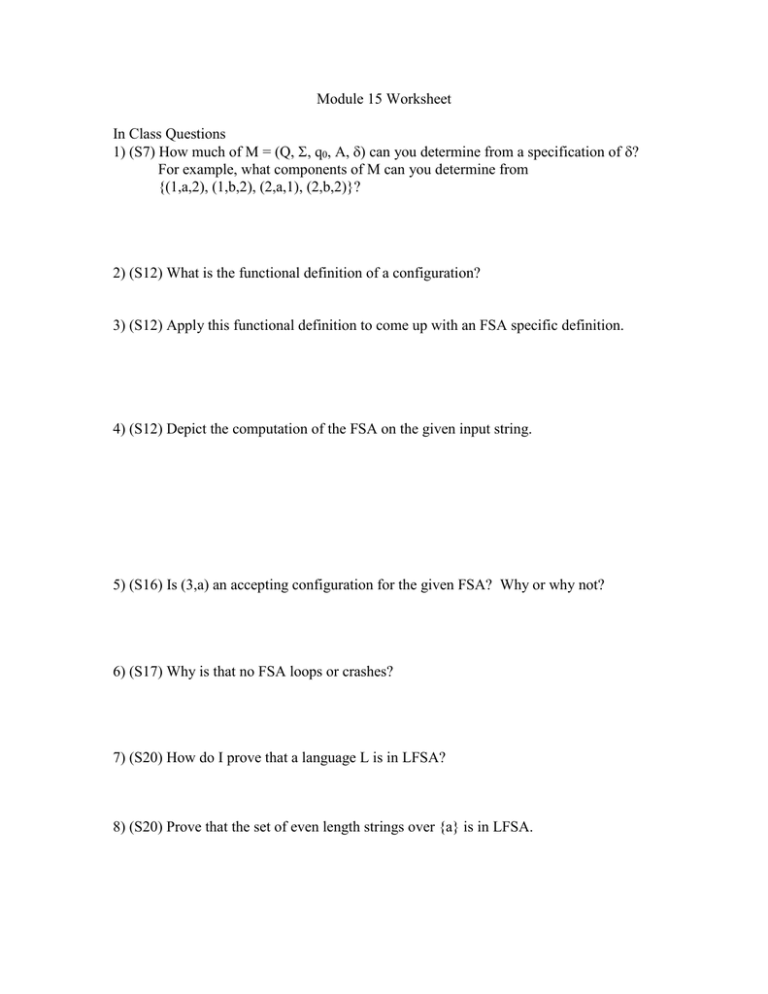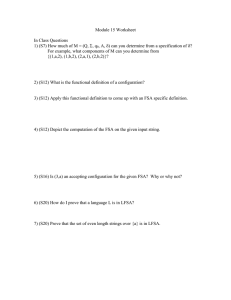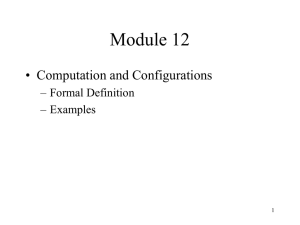Module 15 Worksheet In Class Questions
advertisement

Module 15 Worksheet
In Class Questions
1) (S7) How much of M = (Q, , q0, A, ) can you determine from a specification of ?
For example, what components of M can you determine from
{(1,a,2), (1,b,2), (2,a,1), (2,b,2)}?
2) (S12) What is the functional definition of a configuration?
3) (S12) Apply this functional definition to come up with an FSA specific definition.
4) (S12) Depict the computation of the FSA on the given input string.
5) (S16) Is (3,a) an accepting configuration for the given FSA? Why or why not?
6) (S17) Why is that no FSA loops or crashes?
7) (S20) How do I prove that a language L is in LFSA?
8) (S20) Prove that the set of even length strings over {a} is in LFSA.
Take home review questions
1) Convert the following transition diagram representation of an FSA to the
corresponding 5-tuple representation of an FSA.
2) For an arbitrary FSA M, what is the definition of L(M)?
3) How do we prove that a language L is in LFSA?
4) How could we prove that LFSA is a subset of the regular languages?





